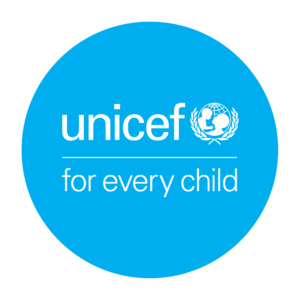

Child Participation Case Study
UNICEF’s Child Rights Schools (CRS) programme is a ‘whole school approach’ to Child Rights Education (CRE), which embeds respect for rights throughout the school on an everyday basis.
In 2021, UNICEF involved primary school children in the development of new CRS programme support materials for schools.
UNICEF’s CRE team wanted to understand the children’s views on what format would work best and what content should be included in the support materials. This was to ensure that the materials produced would be engaging and appealing to schools participating in the programme.
UNICEF’s CRS Coordinator facilitated two consultation workshops to listen to and act on the children’s views.
The children who participated were in senior primary classes (aged 8 – 12 years), from two different schools.
One of the schools was based in an urban socially disadvantaged area, and most of the participating children were from ethnic minority backgrounds. The second school was based in a rural area.
| Things we considered | What we did |
|---|---|
| The space or setting where we got their views (this may include online settings) |
|
| How you identified the children and young people to be involved |
|
| How you involved those who were directly affected by the topic |
|
| How early in the process they were involved in decision-making |
|
| How the process was inclusive and accessible |
|
| Things we considered | What we did |
|---|---|
| How we informed young people about the topics on which we wanted their views |
|
| How we made sure they knew their views would be taken seriously |
|
| How we informed them about level of influence they could have on decision-making |
|
| The methods we used to get their views |
|
| How we made sure they could identify topics they wanted to discuss |
|
| Please describe the topics and issues they raised |
| Things we considered | What we did |
|---|---|
| How we developed a report or record of the young people’s view |
|
| How we checked back with them that their views were accurately represented | |
| How we involved the decision-makers who are responsible for influencing change (other than yourself) |
|
| At what point we involved decision makers other than yourself in the process |
|
| How we and other decision-makers showed our commitment to listening to, and acting on young people’s views |
|
| How we supported young people to play a role in communicating their own views to decision-makers |
|
| Things we considered | What we did |
|---|---|
| How we informed young people about the topics on which we wanted their views |
|
| How their views were acted on by the appropriate decision-makers (what happened to their views) |
|
| Whether we continually checked back with children and young people about the ways you used their views with decision-makers (if possible or appropriate) |
|
| How they were given full and age-appropriate feedback explaining how their views were used (or not) and the reasons for decisions taken |
|
| How we enabled them to evaluate the process throughout | |
| What young people said in the evaluation |
The format of the final programme materials and the style of the content was different to what was initially planned. The physical copy magazine for children would likely have been an online booklet for teachers, with a very different graphic style, had children’s views not been considered.
The key learning from this consultation was that what adults think children like and what children actually like often differ! The adults involved all voted for the illustrator that they thought the children would like, but most of the children voted for a different illustrator style. The teachers in the consultation were very surprised to see the children overwhelmingly vote for a different illustrator than them.
The initial idea for programme support material for schools was a booklet for teachers, only available online. The consultation with children identified that they wanted materials too and that they would like hard copies. Therefore, the support materials produced turned out to be quite different as a result of listening to children’s views. Had the children’s views not been gathered on the favoured illustrator, the programme material style would also be very different. It was a stark reminder that adults do not always know what children like!
Having supporting adults work with small groups worked very well in this process. It ensured that all participating children were included and that all children’s views could be heard, even if they did not want to speak out in front of the larger group.
The consultation process took a lot of time, that had not originally been planned. Therefore, there was not enough time to share drafts with the children for feedback before the printing deadline. If this process was to be followed again, more lead-in time would be given to share a record of their responses. This would give the children a chance to see if their views were accurately represented and provide feedback on the work.

